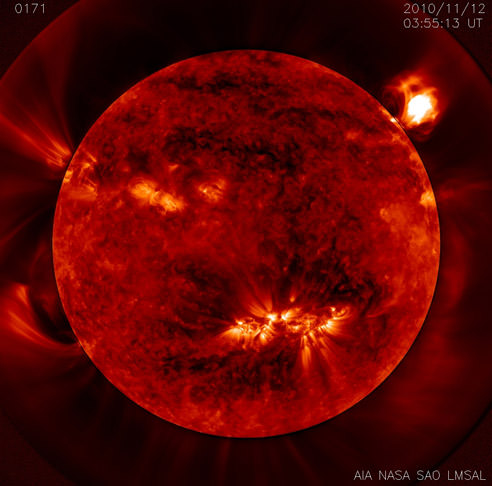

In a quantitative analysis, he showed that the total energy to maintain the corona is only about 10 −5 of the Sun's radiated energy, so that losses of the (optically thin) corona are negligible. He summarized six arguments that support that the corona is hot, only that previous authors did not dare to draw that conclusion-probably the thermodynamic argument that heat cannot be transported from a cool to a hot body prevented previous scientists from that conclusion. He concluded that the Sun's corona is “heated to an extremely high temperature” ( Alfvén, 1941). After the paper by Grotrian but still before Edlén, he published a manuscript in 1941 in the Arkiv för Matematik, Astronomi och Fysik, a Swedish journal ( Alfvén, 1941). Instead, the credit for discovering that the corona is hot should go to Hannes Alfvén. In summary, the two papers by Grotrian (1939) or Edlén (1943) would not be the best choice for pointing to the discovery of the hot corona-and maybe they are still cited because both papers are written in German, and thus not easily available to the majority of astronomers. More importantly, in Edlén's paper the high temperature is only a side remark, so that it is clear that he was not fully aware of the implications. In contrast to common belief Edlén did not use the high degree of ionization, but the intensity of the red line as an argument-a much weaker argument strongly depending on assumptions for the density of the corona. While Grotrian did not speak of high temperatures, but only non-equilibrium effects, Edlén estimated the temperature of the upper solar atmosphere to be about 250,000 K. Both identified emission lines in the corona as forbidden lines of highly ionized species, e.g., the “red line” at 637.4 nm from nine times ionized iron, Fe X. Reviews, textbooks and research papers from the last half century cite Grotrian (1939) or Edlén (1943) when it comes to a reference to the discovery that the corona is hot. However, these researchers did not assume or conclude that the corona is hot.
#PARTS OF SUN CORONA FREE#
While Hulburt's theory was highly speculative, it had the support of the work by Grotrian (1931) who drew attention to the smearing of the Fraunhofer lines due to scattering by free electrons in the corona. Actually, the discovery of the ultraviolet Sun dates back to 1801 with Ritter's observation of the decomposition of silver chloride on the short-wavelength side of the Sun's visible spectrum. Hulburt (1938) concluded that “ultraviolet light, X-rays or particles of zero average charge” must be responsible for the E-layer of the Earth's ionosphere. The first clues to the hot solar atmosphere emerged from the 1869 eclipse observation of the 530.3 nm green coronal line by Young and Harkness. The Sun with its temperature of 6000 K at the surface originally was not expected to support an extended hot outer solar atmosphere that produces ultraviolet (UV) light and X-rays-thermodynamics requires heat to flow from the hot to the cold, not vice versa.


 0 kommentar(er)
0 kommentar(er)
